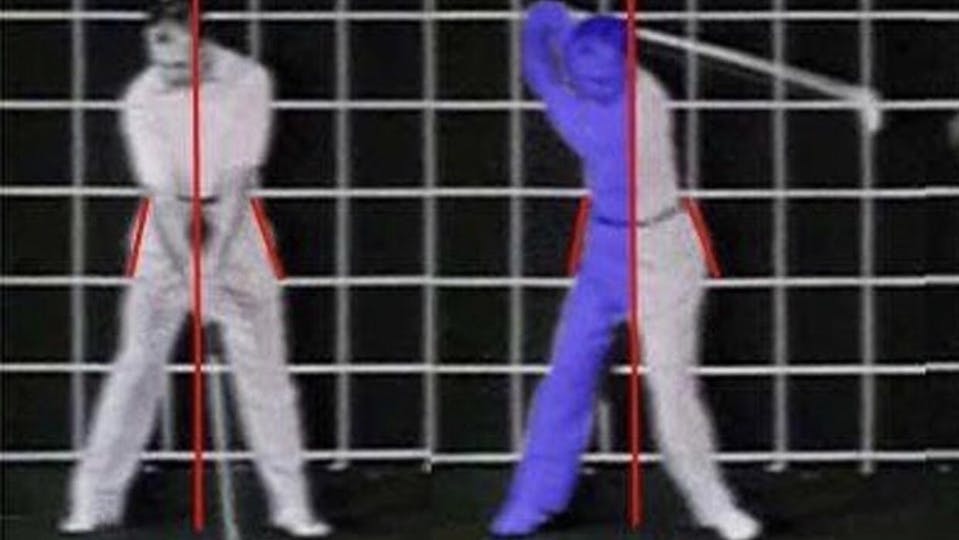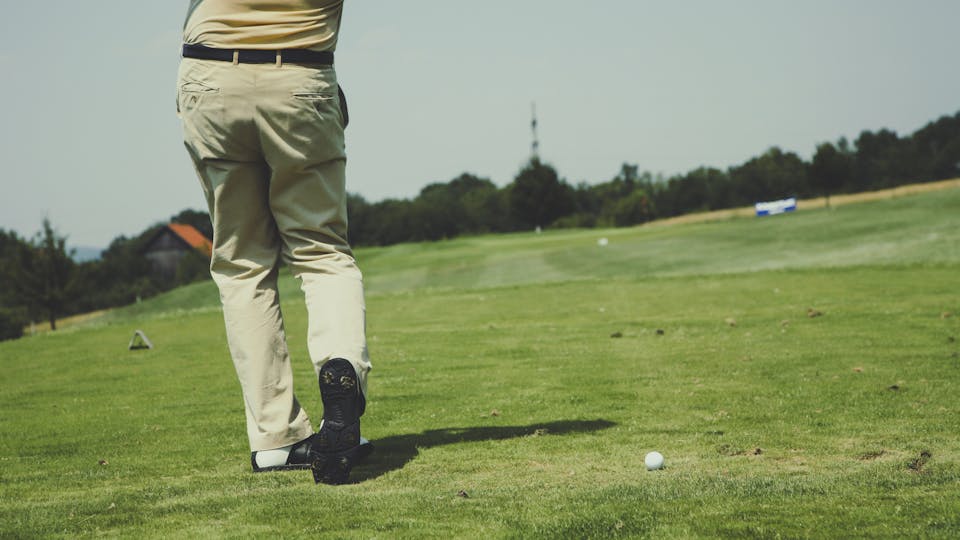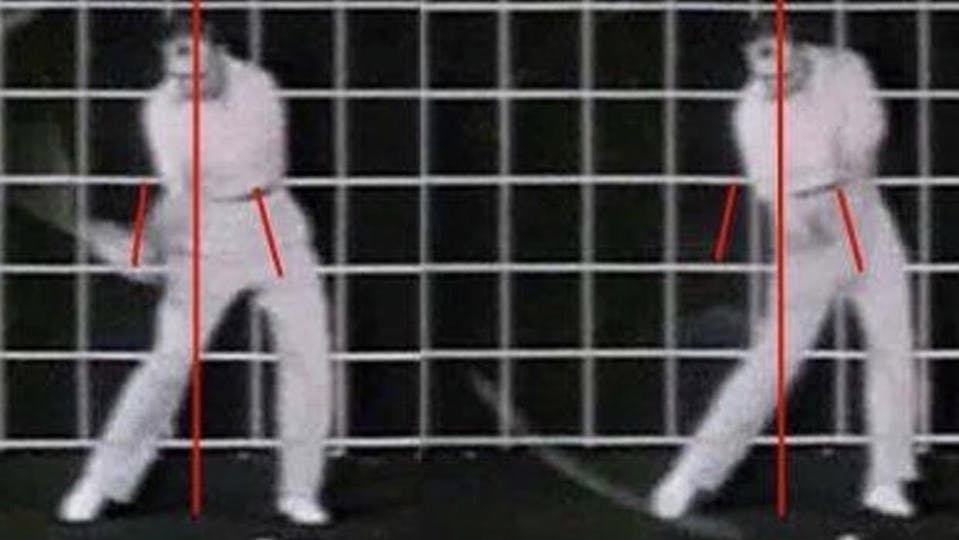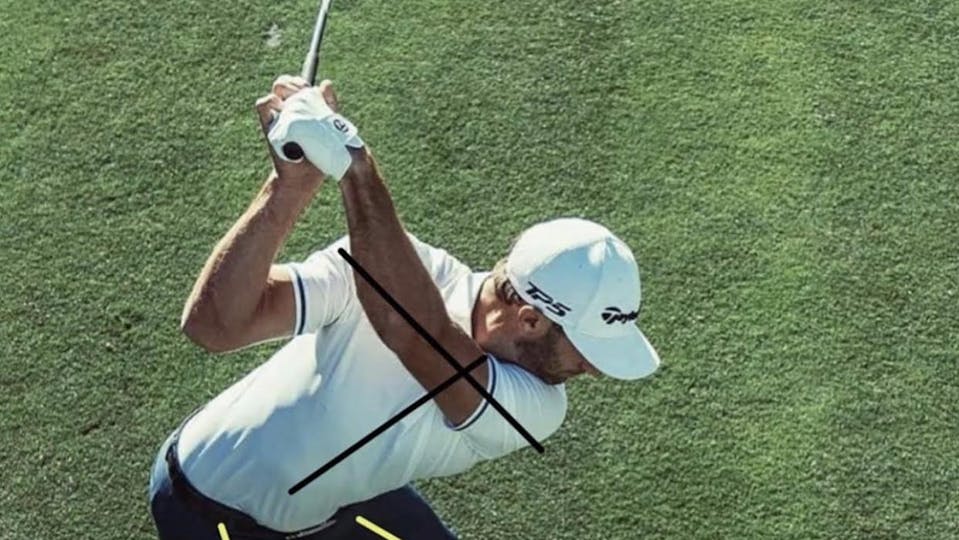Three Simple Adjustments to Hit Farther and Shoot Lower Scores
If someone could train you to hit the ball more solidly, increase your club speed and ball speed, AND manage the curve of your ball flight, you might finally lower your handicap and win a few bucks off your buddies.
By managing COM (“center of mass”) and increasing your hand path, you’ll be in a position to increase club speed and shoot lower scores. There’s a direct correlation between clubhead speed and potential handicap. The faster you can move a golf club, the higher your ceiling.
It’s no secret that, as we age, we start to lose the range of motion in our hips and spines. In particular, internal hip rotation tends to become limited from too much sitting. We gradually lose the ability to flex and extend our spines, as well.
With proper mobility and stability protocols, you can increase your ability to swing a golf club with speed over the long haul. Heck, this is the one game you can indeed play to the grave, so why not do it?
Let’s keep it simple and start with some adjustments that will help most golfers, whether you’re a junior golfer, a middle-aged hack, or an older golfer looking for more speed.
Clubhead Speed and Basic Mechanics
Let’s dive into some of the clues right in front of us on every professional tour, present and past.
Players who do well on any professional tour have the greatest hand path and can apply the most force through the handle, which effectively translates to more clubhead speed. This success means their hands travel through the longest arc while they repeatedly manage to find the sweet spot.
Golfers who hit the ball far, straight, and without injury do the following:
- slant the hips, positioning the body to use the ground effectively;
- create a broad hand path; and
- make 3"–5" of linear force toward the target.

Application of the Mechanics
Firstly, externally rotate your feet and knees at the address (the position a player assumes when preparing to make a stroke). The average tour golfer flares their feet 20–30 degrees at the address. This stance might look goofy to you, until you make your first swing and feel the freedom and power . . . and until you see for yourself that most tour pros flare their feet!
The golfers who don’t flare their feet are either hypermobile, with natural internal hip rotation, or have several vertical components to their swing, making their impact matchups more difficult to pattern. In other words, you probably don’t have time to beat millions of golf balls until you can replicate Webb Simpson’s matchups and the ridiculous timing of his rate of closure. It works for him, but it’s not exactly ideal.
The other end of the spectrum would be Dustin Johnson, who flares his feet, slants his hips, creates depth with a large moment arm, uses the ground effectively, and has one of the lowest closure rates on tour. All that means he hits it far and knows it’s going to go pretty straight.

Other golfers who flare their feet are Tiger Woods, Bryson DeChambeau, Mickey Wright, and the great Sam Snead. By flaring your feet and externally rotating the knees at address, you relieve your ankle and knee joints of unnecessary strain while allowing your pelvis to move with more freedom. This stance increases rotation and your ability to create more linear force. More force equals more speed but decreases your chance of injury – yes, please!
Use the Ground More Effectively
The easiest way to ensure your hips are slanting is to allow your knees to change flex. As you work your way from the address to the top of the backswing, the lead knee will increase its flex while the trail knee extends. This change in flex allows the hips to rotate and slant, keeping your COM centered in relation to your body, and allowing the pressure to shift into the trailing heel. BOOM! Now you look like Hogan in his heyday.
Some golfers keep their knees flexed, but many have chronic back pain, are hypermobile, or don’t hit it very far. Let’s take a hard pass on all that.
Even if you’re the rare individual with great internal hip rotation in the trail leg, you should still change flex in your knees to allow for a powerful, centered pivot. This flex will give you the ability to shift pressure down aggressively and forward (linear force) into the lead leg in transition, without going into excessive secondary axis tilt or early extension.

Restricting your knees and hips is for the birds, not for birdies.
Play Golf on an Inclined Plane
When going from the address to the top of your backswing, allow your neck to tilt with your shoulders. In other words, allowing your lead ear to “listen to the ground” will ensure your shoulders are rotating and side bending, so you’re maintaining your inclination to the ground.
Golf is one strange sport, because it’s played on a roughly 45 degree angle to the ground. This angle means your pelvis and shoulders should maintain an inclination to the ground, allowing you to sustain proprioception and positioning your spine so your lead arm can reach across your chest.
Furthermore, changing the flex in your knees and tilting your neck ensures depth, a powerful pivot, and the ability to swing hard while controlling the low point and making solid contact. This stance is an essential component. We can measure this angle with a face-on camera angle. Just make sure the logo on your hat is moving in the same direction as your shoulders.
If you’re a right-handed golfer, allow the left ear to listen to the ground on your backswing while the trailside gets long. Your head will swivel without moving excessively up, down, away, or towards your target.
You can practice this with your head on a wall, ensuring your head stays in place while creating athletic and dynamic positions with your pelvis and spine.
These are simple tips that are almost guaranteed to increase your moment arm without overloading, all while managing your COM and increasing your GRFs. If that doesn’t sound like fun, you’d better take up bowling or darts.
Wrist Conditions
Without going into too much detail, proficient ball-strikers tend to extend their trail wrists while keeping relatively neutral lead wrists. To extend your trail wrist, you would dorsiflex the back of your hand towards you. This flex ensures you’re loading your trailing arm for stored power while keeping the clubface relatively square. If you extend your lead wrist, this can lead to an open clubface and all sorts of pitfalls. Make sure to keep your lead wrist neutral and your trail wrist extended.

Start implementing these simple adjustments today, and begin shooting farther and straighter!
We can help you identify performance gains, and we cover the entire spectrum of your game, from full-bag fittings to specific areas you want to improve. Don't hesitate to contact us to set up an appointment today.

Are you ready to improve your game?
Book your assessment today by clicking the button below. We'll call you to schedule your visit.
